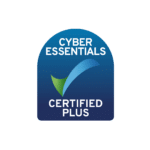“The adoption of emerging technology is the only way established companies will survive in the future.” – Wheeler Coleman, SVP and CIO Blue Cross Blue Shield of Michigan
A new era in the healthcare industry has arrived driven by digital transformation and health care reform, fueled by the recent COVID-19 crisis. The rising demand for lower healthcare costs and technologically advanced medical devices has positively influenced the growth in the medical device rental market, with the global market for medical equipment rental anticipated to reach $70.5 billion USD by 2027, growing at a rate of 5.5% CAGR. The fastest-growing category in the medical device market is for remote monitoring and diagnostics medical devices. Class III Wearable medical devices that measure vitals such as heart rate and rhythm, temperature, and glucose levels is a quickly emerging area in remote patient monitoring and diagnostic.

Remote Monitoring

Utilizing IoT to monitor patients remotely significantly reduces the cost of healthcare and lowers the number of visits in person to see the doctor. In this time of COVID-19 remote monitoring of patients has become even more necessary, enabling medical professionals to monitor patients from afar decreasing contact and transmission of COVID-19. This also provides more space in the office and hospitals for critical patients, as space was at a premium during the peak of the pandemic.
Information Security and Compliance

Return and Cleaning of Wearable Medical Devices
Handling the proper return of medical devices is crucial to the device lifecycle to ensure that the devices are functioning well and sanitized to prevent the spread of any healthcare-associated infections. Having return and sanitation processes clearly outlined reduces the device’s down-time between services and ensures each one is fully cleaned according to the guidelines by the CDC and enables the device to be patient-ready upon arrival. Streamlining the device return process serves to eliminate bottlenecks in the service process and facilitates efficient and rapid equipment turnover.
Complaint management
Complaint management in the medical device industry is not just a customer satisfaction strategy, but also an important regulatory requirement. Regulatory requirements for managing complaints, such as those found in US FDA 21 CFR Part 820.198 and Clause 8.2.2 of ISO 13485:2016, necessitate that there be a formally designated unit with clear procedures laid out to receive, review, and evaluate complaints in a timely manner. Often, medical device manufacturers and distributors struggle to properly categorize and escalate complaints appropriately, leading to long complaint response times and poor customer interactions.
MedTech Solutions
Medtech solutions ease the process of tracking demand and usage of the device, offering full traceability of individual units during the unit’s entire life cycle. A 360 degree view of the medical device ranging from where and when was the unit produced, purchase information and refurbishment information – to usage, service, warranty and contracts improves efficiency and accuracy while a unique identifier for each unit unlocks all information and log-data from the specific device. With predictive and preventative maintenance, medical device companies are able to reduce downtime, improve reliability and performance, and ensure the safety of all medical devices.
An innovative company in the health industry providing remote cardiac monitoring systems saw the need to improve their device product lifecycle management system and their backend finance and accounting systems when they were faced with many challenges in their business processes such as tracking the full medical device lifecycle history and location, scaling to support large volume increases in numbers of devices assigned to patients, and having adequate support for their desired business model. When they were made aware of the IP that Annata delivers on Microsoft Dynamics to support device rentals, they immediately saw the expertise they needed for their product lifecycle system improvement and engaged Annata to develop a custom CE and Power Platform application. Out of this need and others similar in the industry, Annata has launched JiwaMed, a brand to take solutions such as this to others in the growing market and facing similar needs.
JiwaMed, Medtech by Annata
Annata 365 is a comprehensive business management solution by Annata, tailor-made for the automotive and equipment industry manufacturers, importers, distributors, and service partners to ensure that the processes required to move a device along the value chain are flexible, agile, and meet all specific demands such as warranty claims, spare parts management and servicing, along with the ability to add new business models and evolve as the market changes. Annata 365 provides an excellent technological platform and specialized rental/lease management module that assists medical device vendors and OEM’s in setting up subscription services for medical devices.







